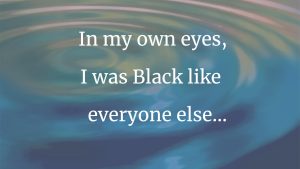Stacy Nigliazzo
Only thirty minutes into my evening ER nursing shift, and I was already behind. My first patient was a pregnant teenager with heavy vaginal bleeding. “About three months, I guess,” she flatly replied when asked about her last period. As we placed her legs in the stirrups for the pelvic exam, torrents of blood and water rolled into the kick bucket on the floor.
Dr. Parkman had barely opened the speculum when we saw it. I knew she couldn’t see the doctor’s face, but she could see mine. Shielding her from my expression, stunned and speechless, I cowered as best I could behind her left knee.
There it was. Tiny, pink and perfect. Her baby’s hand, so small that it would easily fit inside the shell of a walnut–outstretched as if reaching for us, for its very life.
The doctor and I both instantly knew there was no chance of survival. It just wasn’t time yet. He removed the speculum, and we watched as the tiny fingers slowly disappeared back inside.
Fifteen minutes later I exited the labor and delivery floor with an empty stretcher, having left my patient in a stark delivery room, pushing. The screeching fetal heart monitor echoed throughout the unit. I paged the chaplain and the social worker to come help her face the grim reality of her child’s certain death. I wanted to give her more, but in my heart I knew that we could provide only comfort and support. It would be cruel to offer any hope that this infant would live.
I returned to the ER and found her former room already prepared for the next patient, en route to us via ambulance. My charge nurse gave me the report: ninety-seven-year-old female from a nursing home, generalized weakness. I would have taken the Lord’s name in vain then and there, but I didn’t have time. I knew all too well the grueling amount of care she’d likely need–and I’d also been assigned three other patients while I was gone.
I hardly had time to make rounds on them and to gather the necessary equipment before she arrived, her presence announced by the clanking squeal of a rolling metal stretcher. I could barely make out her tiny form beneath a big pile of gray blankets.
“No family to speak of; she’s pretty much outlived them all,” said the paramedic, handing me her medical chart. I opened it and was puzzled to see no daily medications or previous diagnoses listed. I wondered if it was really possible for someone to walk this earth for close to a century without a scratch. One could only hope.
Somewhat skeptically, I introduced myself and awaited her reply. Her gentle eyes instantly captivated me; I was eager to hear her voice.
She told me her name was “Mrs. Jack Winston” and confirmed what her chart indicated. Her warm, welcoming manner and quiet eloquence charmed me. “I don’t see my doctor too often, but she’s a dandy, all the same,” she remarked.
I asked her about shortness of breath, chest pain and every other ominous symptom I could think of. One by one, she denied them all. I stood still beside her, confused and fascinated.
After a few quiet moments of thought, I gathered up the monitoring equipment and started to record her vital signs. Carefully, I peeled away the blanketed layers to reveal her frail, emaciated frame.
She was wearing a simple white nightgown that sheathed her arms down to the fingertips. She looked like an angel. Ethereal, almost. Preparing to take her blood pressure, I folded back her left sleeve.
There it was. Withered, wrinkled and weather-beaten. Her hand, adorned with the same silver band she’d worn every day for the last sixty years, even though the man who first placed it there had died nearly twenty years ago.
Trembling, she reached for me as if for her very life. I leaned in closer and, taking her hand in both of my own, tightly embraced it.
She smiled and whispered, “Honey, this old body’s been very good to me, but I’m tired. It’s just time.”
About the author:
Stacy Nigliazzo RN is an ER nurse who also holds a BS in psychology from Texas A&M University. She entered the medical field in 2003, inspired by her mother, who died that same year after being diagnosed with acute myeloid leukemia. While a nursing student, Stacy received a clinical excellence award from her program mentors and a national nursing excellence award from Elsevier. She is a lifelong poet; this is the first story she has ever submitted for publication.
Story editor:
Diane Guernsey







